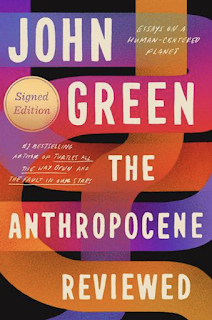★ My family became political refugees,
having no choice but to escape their homeland, Afghanistan, after the Soviet
Invasion in 1979. Over time, their Afghan identity started to dim, becoming
more interconnected with American ideals; however, one thing always remained
and kept the culture alive: food. My family would not be the same family that
it is today without the variety of Afghan foods and treats that has been
present for generations and generations. My grandma has been the sole person in
our family to continuously uphold our culture through recipes. So, with that,
we have all tried to learn this adored and valued drink known as and sheer
chai, translating to “milk tea.” Sheer chai is widely known for its adorable
pink color, oftentimes being referred to as “pink tea” to those who may not
know exactly what it is made up of. I hope by sharing, we could all keep Afghan
culture and tradition alive, as the past years have made us forget the beauties
that lie within the chaos.
★ INGREDIENTS
○ Pot full of water
○ 1 cup of loose leaf green tea
■ I recommend finding the “Alwazah”
brand at any local Arab/Asian markets, but if not, any loose leaf green tea is
perfectly okay!
○ 1 cup of ice
○ Milk of choice
■ I have personally tried this recipe
with oat milk since I try not to drink cow milk, and it works just as good!
○ Sugar
■ (of any kind)
★ TOOLS NEEDED
○ 2 medium sized pots
○ Ladle
○ Measuring cups
○ A strainer
■ I recommend the fine mesh sieve
strainers, but any sized strainer could work by following the instructions!
○ A pitcher
*WARNING*
-- once you begin, your stovetop may get messy with spills, so prep the
kitchen/stovetop area for a mess so no one gets in trouble with parents :))
★ STEPS
○ Set your pot of water to boil and
while waiting for the water to boil, gather all your ingredients.
○ Put the one cup of loose leaf green
tea in your pot once your water is boiled.
○ Let the loose leaf green tea sit for
3-5 mins in the boiling water
○ Once the water turns dark purple,
*with dark purple bubbles*, add the teaspoon of baking soda to start the
activation of the pink color
○ Ladle the mixture in the pot until
the bubbles turn light pink
■ This step may take about 5-7 mins,
so be patient and don’t let your arms get too sore from ladling for so long
○ After several minutes of ladling
from the step above, pink bubbles should appear
■ If pink bubbles fail to appear
during this time, it’s okay, just be patient and keep going :)
○ Once the pink bubbles appear, add the
cup of ice and continue ladling until the pot mixture turns a magenta color
■ *This step of adding ice and baking
soda activates the pink color, so it is KEY to this recipe*
○ Once your pot mixture turns magenta,
strain out the loose leaf onto another pot
■ WARNING-- be careful straining!
■ Wear oven mitts, keep your face at a
distance in case of splash back from pouring, and most importantly, avoid a bad
burn!
○ Once the pot mixture is strained and
there is no longer loose leaf particules, place the chai into the new pot and
add your preferred kind and amount of milk to the pot
■ The milk should be a balanced milk
to tea ratio, depending on your specific preference (similar to your preference
when adding milk to coffee)
○ Continue ladling for about 1 minute to ensure
everything is balanced and mixed → (see image to see the color you
should strive for!)
○ Place the sheer chai in a pitcher
and serve it in mugs to everyone in your household!
○ Serve the sheer chai in a mug, and
add your desired amount of sugar to your cup
■ OR, if everyone in your household
has similar taste buds, you may add the sugar to the pot and then serve!
★ ENJOY
○ With sheer chai, Afghans
traditionally pair it with any pastry for dessert
■ For the people who are like me and
never have time for a proper breakfast, I typically reheat the tea in a pot for
breakfast and pair it with something small like a croissant or muffin!
○ Sheer chai is absolutely perfect for
cold days when everyone stays in, so I strongly suggest trying it out soon
before it gets too hot!
○ I personally have never tried sheer
chai iced, but if any of you decide to make it a cold drink and add ice, PLEASE
tell me how it is! I’d love to see all the different ways you all incorporate
your own cultures into this drink!
○ I hope that with this recipe, we can
spread this Afghan delicacy to all cultures and homes, keeping Afghan culture
alive!
*Image
pulled from the Youtube Channel “Mazar Cuisine,” uploaded on March 31, 2017.
*Image pulled from website “We Heart Living,”
posted on De





